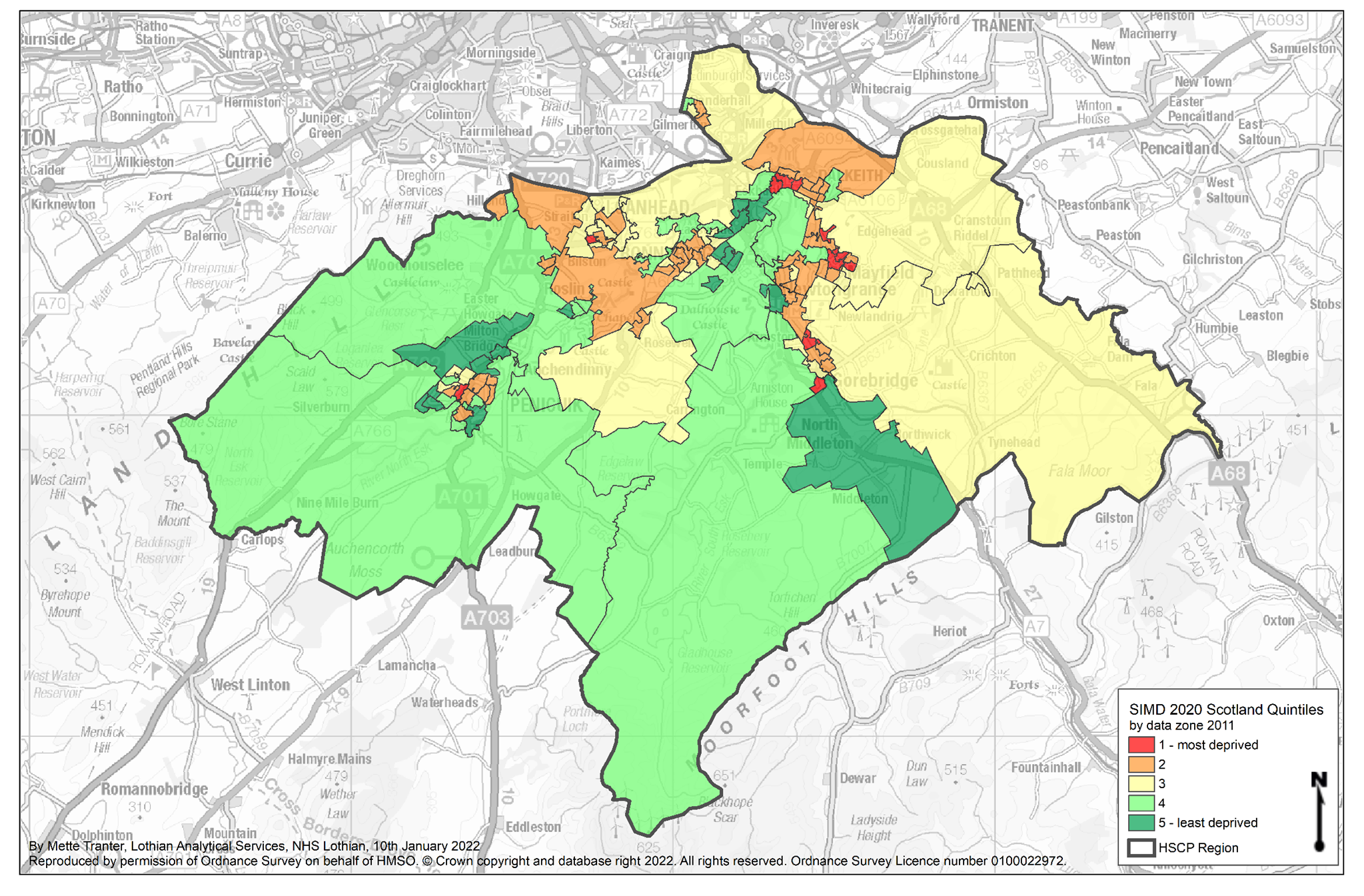Inequalities - data
Inequalities is a shorthand term for the unfair and avoidable differences in people’s health and wellbeing across social groups and between different population groups (Public Health Scotland, 2023). Health inequalities go against the principles of social justice because they are avoidable. They do not occur randomly or by chance. They are socially determined by circumstances beyond an individual’s control. These circumstances disadvantage people and limit their chance to live longer, healthier lives.
The conditions in which we are born and in which we live, and work can impact on our health and wellbeing. These conditions that influence our health, which are labelled as social determinants of health include:
- Childhood experiences
- Housing
- Education
- Social Support
- Family Income
- Employment
- Community
- Access to health services
The right to health means the right of everyone to the highest attainable standard of physical and mental health. For this to happen, services and systems that help us to live long healthy lives should be and they should be accessible, available, appropriate, and high quality (Public Health Scotland, 2023). The persistence of health inequalities means that not everyone is enjoying their human right to the highest possible standard.
Some examples of health inequalities in the most deprived areas of Midlothian are:
- Early death due to coronary heart disease - 55% higher
- Hospital stays for preventable reasons - 38% more likely
- Difference in life expectancy - 9 years shorter
- Prescription for anxiety/depression - 30% higher
- Children living in poverty - 24% of children
Source: ScotPHO profiles, Public Health Scotland
People affected by poverty and social disadvantage have poorer health outcomes, are more likely to die younger and are more likely to suffer ill-health than their neighbours with more resources. People also experience disadvantage through, gender, social position, ethnic origin, geography, age, and disability.
Localities
Due to the practicalities and implications of small-scale planning and commissioning, we operate on an East-West approach.

Scottish Index of Multiple Deprivation
The Scottish Index of Multiple Deprivation 2020 identifies places experiencing deprivation.
There are 10 data zones in Midlothian within the most deprived 20% data zones in Scotland:
- 2 in the most deprived 5% - both in Dalkeith.
- 1 in the most deprived 5-10% - in Dalkeith
- 2 in the most deprived 10-15% - in Easthouses and Mayfield
- 5 in the most deprived 15-20% - in Straiton, Mayfield, Easthouses, North Gorebridge and Gorebridge & Middleton

Whilst all areas in the most deprived 20% were around Dalkeith, Mayfield, Easthouses and Gorebridge, areas in the most deprived 20-30% were spread more widely including Thornybank, Penicuik and Newtongrange.
Only 7.7% of the Midlothian population is in the most deprived quintile (SIMD 1), however it has one third of the population in the second most deprived quintile (SIMD 2). Midlothian also has lowest percentage of the population in the least deprived quintile (SIMD 5) with 14.1% of its population, compared to Edinburgh which has 42.5 % of its population in the least deprived quintile.
Digital Inclusion
Digital skills and confidence (as well as affordable and reliable access to digital devices and data) are fast becoming essential to life in the UK (Good Things Foundation, Carnegie Trust, 2020). Many different terms are used interchangeably – digital inclusion, digital participation, digital capability, digital literacy etc. It is about people being able to use digital technologies, particularly the internet, in ways that enhance their lives and contribute to helping them overcome other disadvantages which they might face (The Wales Co-operative Centre with Carnegie UK Trust, 2018).
Digital exclusion is a significant issue. There are still citizens and communities that do not have access to an affordable or reliable internet connection, an appropriate device, or the skills to effectively engage with digital public services (Audit Scotland, 2021). Digital inequalities are strongly linked to wider social and economic disadvantage (Good Things Foundation, Carnegie Trust, 2020). There is a strong relationship between the Scottish Index of Multiple Deprivation and internet uptake in Scotland, with internet uptake among the 10% most deprived in Scotland at 53% compared to 81% for the 10% least deprived (Carnegie UK Trust, 2016a).
UK-level evidence (Honeyman etc al, 2020) involving narrow measures of access and use of digital technologies suggests that gaps in measures of digital technology use between disadvantaged groups and the rest of the population have been narrowing in recent years. However, significant differences in access and use persist:
- People living in rural areas have less access to, and slower, internet infrastructure. Recent data is lacking but deprived areas also were more likely to lack access.
- Older people are less likely to own smartphones or connect to the internet.
- Where differences between ethnic groups persist in internet access this is explained by the age and income profile of these groups.
- People with lower income are less likely to have access to smartphones in their household and be on pay monthly contracts and data plans.
In Midlothian:
- 97% of people in Midlothian report to have access to the internet at home. The top 3 devices used by adults who use the internet for personal use was personal computer or laptop, mobile phone/smartphone, and tablet. (Scottish Household Survey 2021)
Page updated: February 2025
